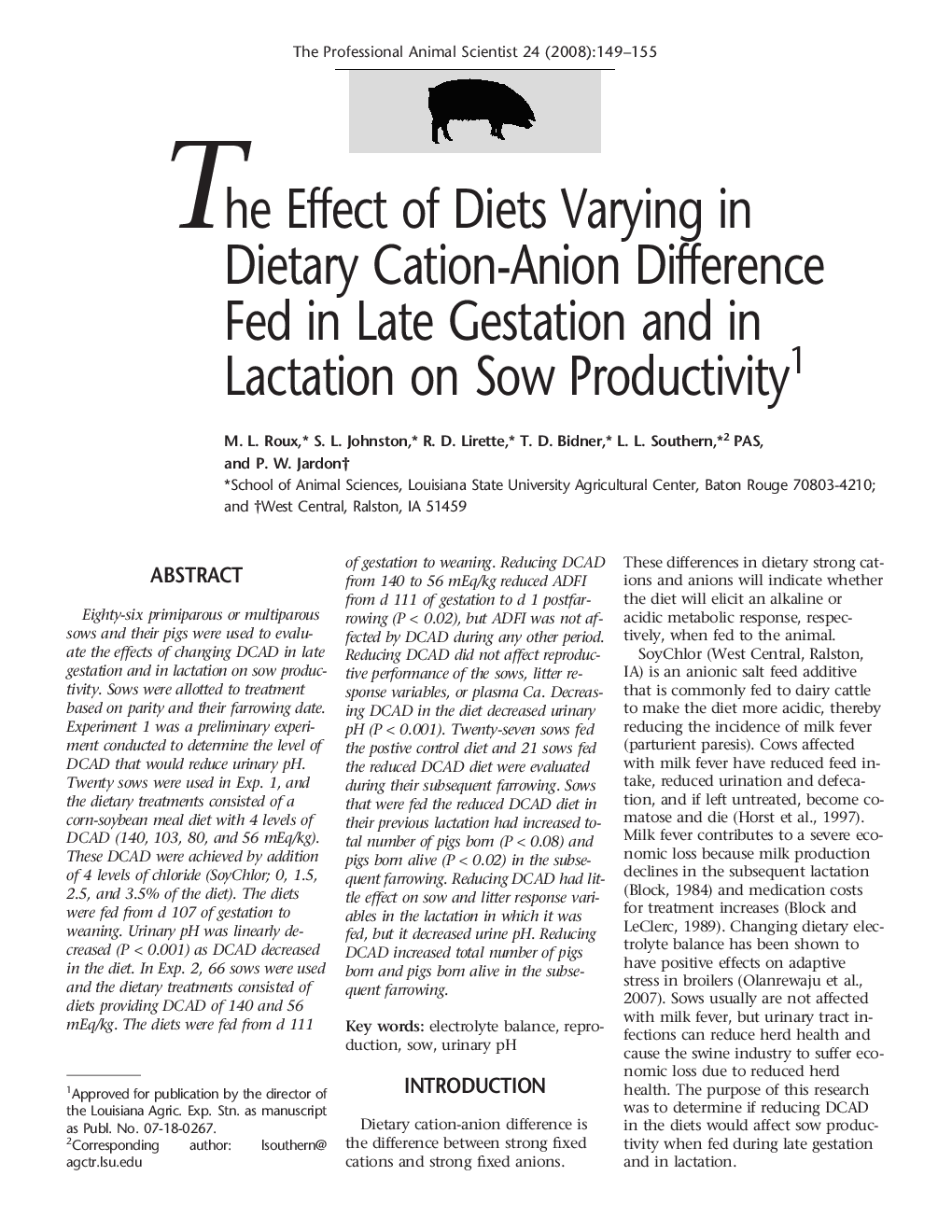| Article ID | Journal | Published Year | Pages | File Type |
|---|---|---|---|---|
| 2454568 | The Professional Animal Scientist | 2008 | 7 Pages |
Abstract
Eighty-six primiparous or multiparous sows and their pigs were used to evaluate the effects of changing DCAD in late gestation and in lactation on sow productivity. Sows were allotted to treatment based on parity and their farrowing date. Experiment 1 was a preliminary experiment conducted to determine the level of DCAD that would reduce urinary pH. Twenty sows were used in Exp. 1, and the dietary treatments consisted of a corn-soybean meal diet with 4 levels of DCAD (140, 103, 80, and 56 mEq/kg). These DCAD were achieved by addition of 4 levels of chloride (SoyChlor; 0, 1.5, 2.5, and 3.5% of the diet). The diets were fed from d 107 of gestation to weaning. Urinary pH was linearly decreased (P < 0.001) as DCAD decreased in the diet. In Exp. 2, 66 sows were used and the dietary treatments consisted of diets providing DCAD of 140 and 56 mEq/kg. The diets were fed from d 111 of gestation to weaning. Reducing DCAD from 140 to 56 mEq/kg reduced ADFI from d 111 of gestation to d 1 postfar-rowing (P < 0.02), but ADFI was not affected by DCAD during any other period. Reducing DCAD did not affect reproductive performance of the sows, litter response variables, or plasma Ca. Decreasing DCAD in the diet decreased urinary pH (P < 0.001). Twenty-seven sows fed the postive control diet and 21 sows fed the reduced DCAD diet were evaluated during their subsequent farrowing. Sows that were fed the reduced DCAD diet in their previous lactation had increased total number of pigs born (P < 0.08) and pigs born alive (P < 0.02) in the subsequent farrowing. Reducing DCAD had little effect on sow and litter response variables in the lactation in which it was fed, but it decreased urine pH. Reducing DCAD increased total number of pigs born and pigs born alive in the subsequent farrowing.
Related Topics
Life Sciences
Agricultural and Biological Sciences
Animal Science and Zoology
Authors
M.L. Roux, S.L. Johnston, R.D. Lirette, T.D. Bidner, L.L. PAS, P.W. Jardon,
